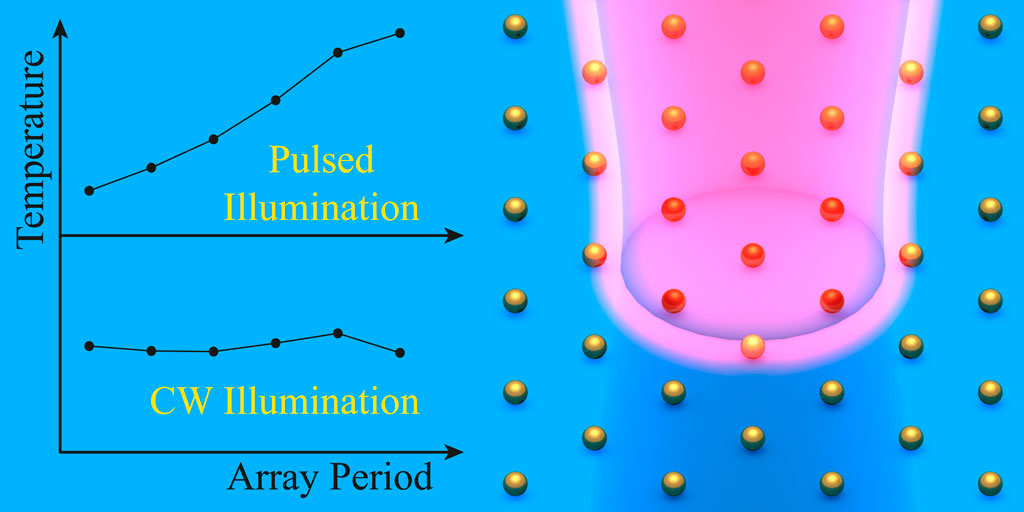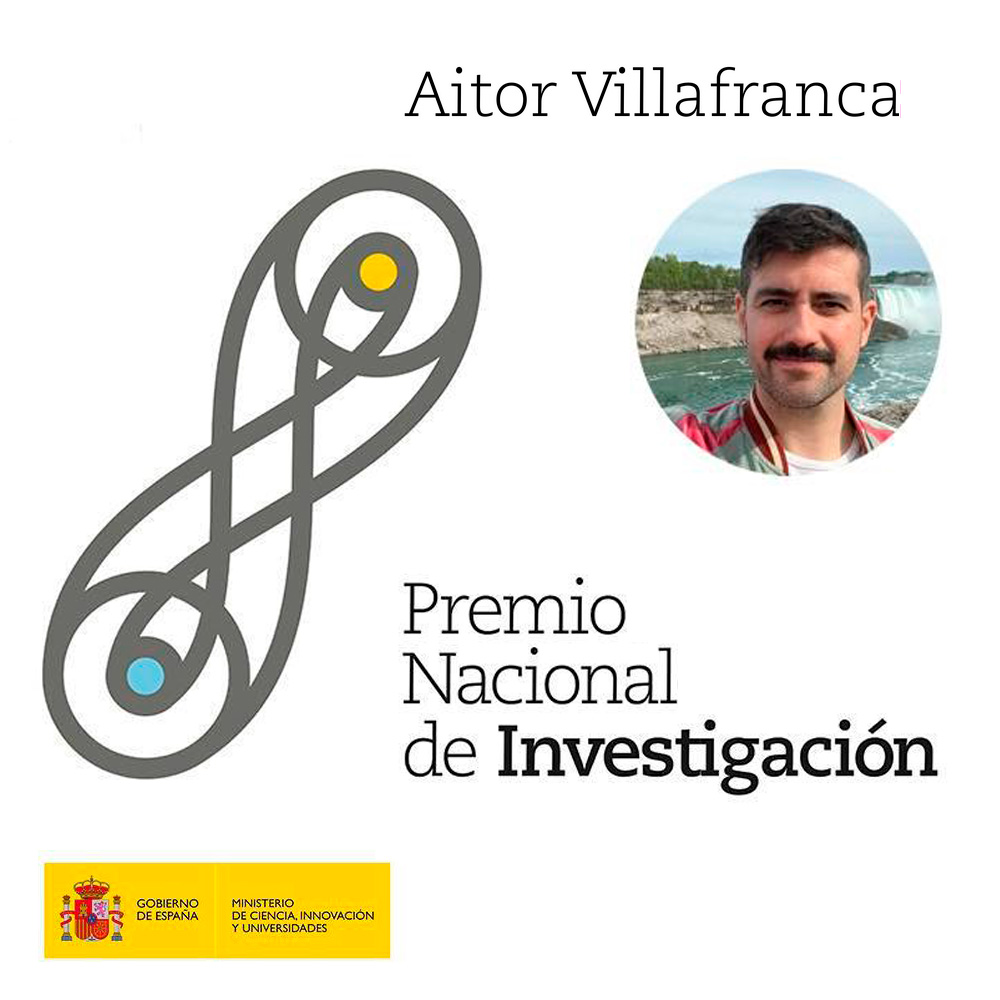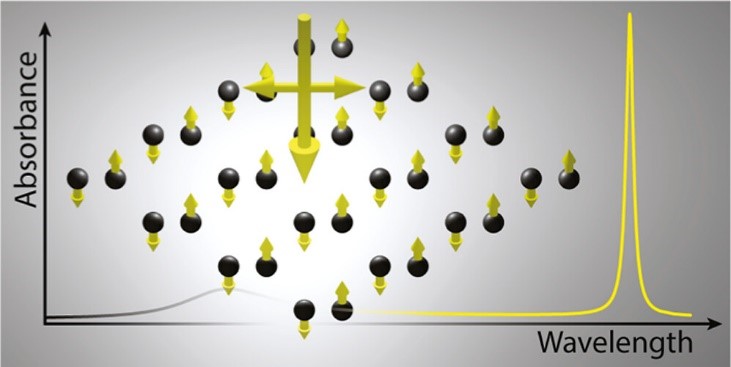Lattice Resonances for Thermoplasmonics
-
The study seeks to generate the most amount of heat possible in a localized region by taking advantage of the properties of lattice resonances.
This line of research will enable advances in cutting-edge fields such as
Latest news

A periodic array of 100 nm diameter gold nanoparticles surrounded by water is illuminated by a finitely wide beam of light. The temperature increase of the nanoparticles is accentuated with the period of the lattice if the light is pulsed, but not if it is continuous.
What is thermoplasmonics?
When a metallic nanostructure is illuminated, its electrons begin to oscillate at the frequency of the light that excites them, generating the so-called surface plasmons. These generated plasmons absorb light energy and produce very large increases in the electromagnetic field in their surroundings, and can generate large amounts of heat. This heat was initially considered an unwanted side effect but today it has motivated the development of the field of thermoplasmonics, which seeks to harness this heat for useful purposes.
Network Resonance
The scientific team behind this work has spent some time investigating how to manipulate and take advantage of network resonances, a characteristic response< /a> of the periodic networks of identical nanostructures.
When multiple metallic nanoparticles are placed close to each other, the plasmons that each of them generates interact with each other, thus modifying the general properties of the system.
If the system is made up of a periodic network of identical nanostructures and configured under the right conditions, these systems are capable of supporting collective behaviors known as network resonances that produce electromagnetic responses much stronger than the sum of the individual plasmons. Such behavior makes these systems an ideal platform to develop new biosensors, light-emitting devices, and color filters, among other applications.
In this work the team has investigated the use of the unique properties of lattice resonances excited by spatially finite light beams to enhance and manipulate heat generation in localized regions.
Through extensive theoretical analysis based on a coupled dipole model, they have shown that arrays that support a lattice resonance absorb more energy per nanoparticle and therefore achieve a much higher temperature rise if illuminated with a laser. pressed than those that do not support this mode.
On the contrary, for continuous wave lighting conditions, the temperature rise is practically independent of the grid period.
In addition, the team has succeeded in designing matrices with two different nanoparticles per unit cell, so that the lattice resonance phenomenon occurs for two different wavelengths, making it possible to independently excite the lattice formed by one type or another of nanoparticles.
The results of this work pave the way for the development of thermoplasmonic applications that exploit the exceptional optical response and design flexibility provided by lattice resonances.
This is a collaborative work between the CSIC Institute of Optics, the Department of Physics and Astronomy of the University of New Mexico and the Department of Optics of the Complutense University of Madrid
Related news
Aitor Villafranca, Spanish National Research Award 2024
He has received the award in the Angela Ruiz Robles Category, in Knowledge Transfer These awards are the most important recognition in Spain...
Normal Incidence Excitation of Out-of-Plane Lattice Resonances in Bipartite Arrays of Metallic Nanostructures
Madrid / January 15, 2024A team of researchers from the Institute of Optics of the CSIC and the Italian Institute of Technology have achieved a new...
Tunable bound states in the continuum in active metasurfaces of graphene disk dimers
Madrid / December 12, 2023A research team made up of researchers from the Institute of Structure of Matter and the Optics Institute of the CSIC, the...




